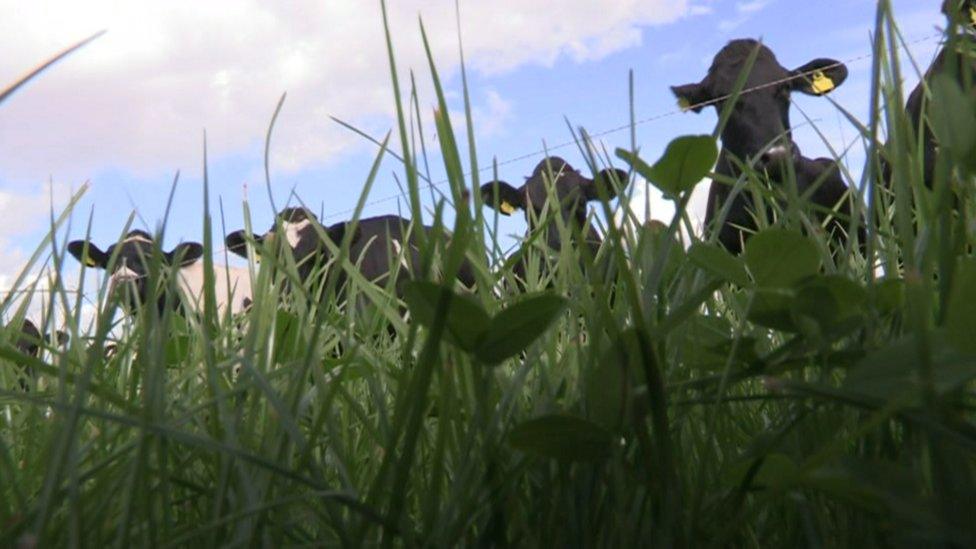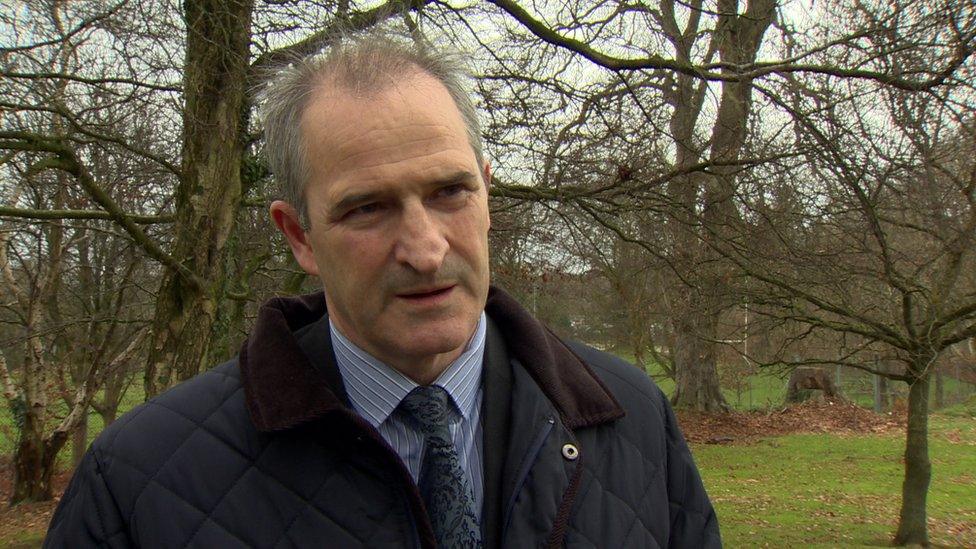Farmers to begin hearing ammonia-affected planning decisions
- Published

The bulk of Northern Ireland's ammonia comes from animal waste
The Environment Agency will start to say on Friday whether they've approved or objected to about 100 planning applications on farms stalled due to concerns about ammonia emissions.
The first of its decisions will be issued to planners.
By next month, all affected farmers will know if proposed sheds and milking parlours have been passed or rejected.
In some cases the agency may require more detail before planners go on to make a final decision.
The subject has proven highly controversial, with farmers describing the delays as "farcical" and costly.
They also questioned some of the science but officials insist they are using the best data available.

Two thirds of ammonia emissions come from beef and dairy cattle
Ammonia levels in Northern Ireland are the highest in the UK and it is damaging sensitive habitats.
The bulk of it comes from livestock waste. It gets into the atmosphere and is deposited as nitrogen.
Levels at many protected sites such as important wetlands or areas of special scientific interest (ASSIs) are at critical concentrations.
The European Commission already has issues with the management of protected sites in Northern Ireland and further breaches could result in big fines.
Farmers have found the whole process unwieldy and drawn out.
'Unacceptable delays'
The president of the Ulster Farmers' Union, Ivor Ferguson, said one farmer had been stuck in the planning system for three years, most were in the system for a year, and the delay was "unacceptable".
The head of the Environment Agency, David Small, said he understood farmers' frustration but he had a duty to protect the environment in making the decisions.
It's a particular issue for farmers who live within 7.5km of protected sites. Pig and poultry farms have been regulated for ammonia for years.
Now the rules also apply to cattle businesses.
If they want to build livestock units the potential ammonia output has to be assessed and may require emission modelling.

David Small, head of the NIEA, said he had a duty to protect the environment in making the decisions
If the ammonia load is likely to have an impact on the site it could affect the planning decision.
Planning may be approved if appropriate mitigation can be used but that adds cost.
Farmers say the rules could lead to unintended outcomes.
They use the example of applications for modern sheds, which would generate less ammonia, being turned down leaving farmers to work in older facilities which emit more of the gas.
Environmentalists have said the ammonia issue points up the contradiction in the Northern Ireland Executive's Going for Growth strategy for expansion of agri-food.
They claim it is not possible to expand agriculture without having a detrimental environmental impact.
The department says since agriculture and environment were combined under the one roof it has been working to strike a balance.